Daily Misery Has a Number Commute 2nd-Longest in U.S.
Washington Post graphic
"A community’s physical form, rather than its land uses, is its most intrinsic and enduring characteristic." [Katz, EPA] This blog focuses on place and placemaking and all that makes it work--historic preservation, urban design, transportation, asset-based community development, arts & cultural development, commercial district revitalization, tourism & destination development, and quality of life advocacy--along with doses of civic engagement and good governance watchdogging.

1. Force development in the North Capitol Corridor (Armed Forces Retirement Home, McMillan Reservoir, although I personally am opposed to development, probably, at the McMillan site)
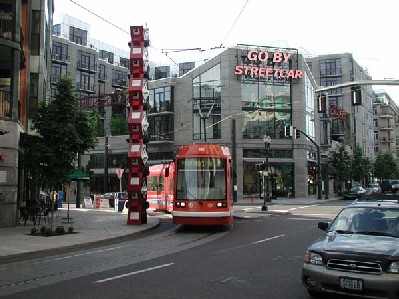
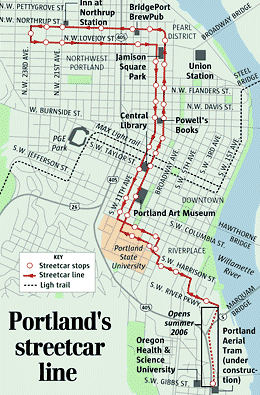

Labels: land use planning, transportation planning
A couple good articles about this, articles that Fred Hiatt of the Post needs to read... Why Traffic Congestion Is Here to Stay...and Will Get Worse by Anthony Downs and Rethinking Traffic Congestion by Brian Taylor.
Labels: land use planning, transportation planning
From Business Week, "The New Science of Siting Stores: Thanks to complex mapping and demographic tools, retailers can now find the perfect location in a fraction of the time it used to take"
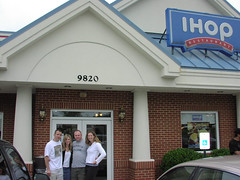 Is Brentwood ready for an IHOP?
Is Brentwood ready for an IHOP?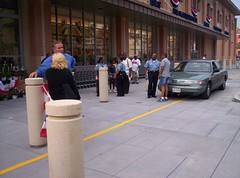
Labels: retail, urban revitalization
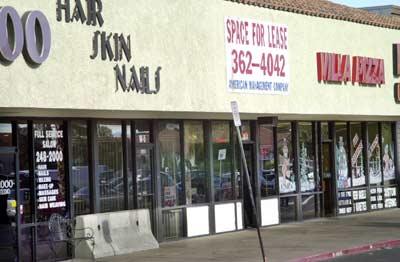
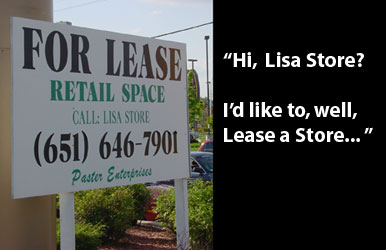
Labels: commercial district revitalization, retail, urban revitalization
A car is on average about 15 feet long. Given spacing between cars when stopped at traffic signals, figure you can fit 15-17 cars in 300 feet.
Labels: transportation demand management, transportation planning
Yesterday's Post, in "XM's Mark on Northeast D.C.," subtitled "Fate of Headquarters Uncertain if Sirius Merger Goes Through," and the Washington Business Journal, in "Merger would put D.C. base in question," have long articles about the possible impact on the city's economic development agenda if XM Satellite Radio merges with Sirius Satellite Radio, and if most of the jobs decamp to New York City.
Labels: economic development, media
Is a blog entry by Baltimore's Gerald Neilly. Except for a minor quibble where he suggests that the prevailing city driving speed should be 30 mph (it's higher than that in Baltimore), it's excellent.
Labels: transportation planning
Note this piece in Sunday's New York Times travel section, "Travel by Rail in Europe Is Set to Get Even Faster." From the article:
Labels: cultural heritage/tourism, economic development, railroads, transportation planning

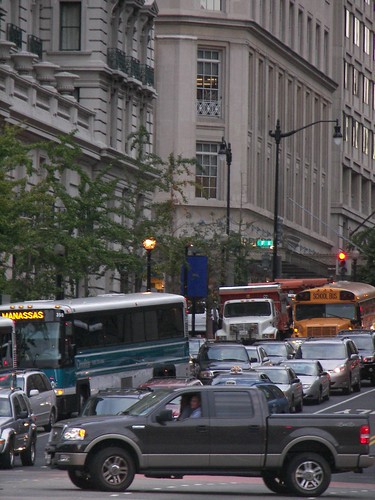

Labels: transit, transportation, transportation demand management, transportation planning
From "Brewery's lease could shake up Harborplace roster again," in the Baltimore Business Journal.
Labels: retail, waterfront
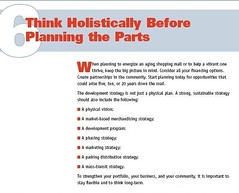


Labels: retail, urban design/placemaking, urban revitalization

Labels: transportation, transportation demand management, transportation planning


Labels: urban revitalization, urban sociology, urban vs. suburban
2010 Legacies Now and the Creative City Network of Canada have developed two new resources to assist local governments, as well as arts, cultural and heritage organizations, plan for the future.
Labels: cultural planning
In "Globe trotting, Chicago-style," the Chicago Sun-Times describes various ethnic neighborhoods in the city. It's a lesson in outmigration, inmigration, and neighborhood stability. It's interesting to eavesdrop on people--once a Capitol Hill resident was discussing going to Little Italy in Baltimore and lamenting how DC doesn't have ethnic neighborhoods.
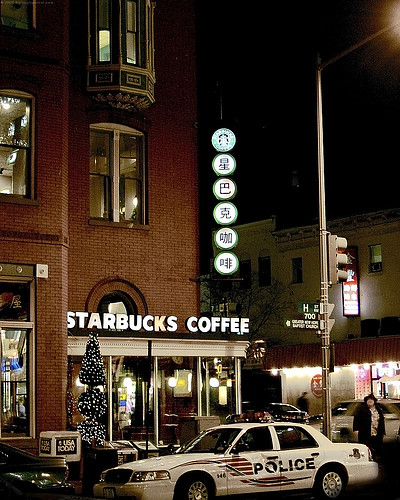
Labels: invasion-succession theory, urban revitalization, urban sociology
A new transit oriented development is being planned in Greater Princeton Township, in NJ. It sounds like this workshop was pretty interesting, according to the article in the Trenton Times. I'd like to read the specific suggestions, but the website for the project, North Brunswick Transit Village, isn't updated with the latest community meetings.
Labels: transit, transportation planning, urban design/placemaking
(I know DC is looking at this too. Wifi is still moving along, being tested, on Viva Rapid Transit buses in the York Region in Greater Toronto. I'll update their progress as I learn more.)
Labels: transit, transit marketing
PPS's newest e-newsletter edition is about Waterfronts. This particular article lists 13 key steps for turning waterfronts around. Because it's really about "rebuilding" or "strengthening" places, for the most part, the points are universal.
Labels: urban design/placemaking, waterfront
DC1974 sends us a link to this story from the Chicago Tribune, "Tollway board says grocer can collect $2.90 for transponder," and writes:

Labels: transit
Check out this website.
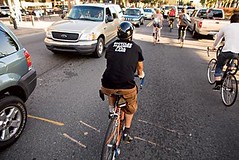
Labels: bicycling, mobility, transportation planning
1. Bicycling: "Wheeler Dealers: Seeing a shift in opportunity, cyclists are riding a spurt of political power" (10/22/2006)
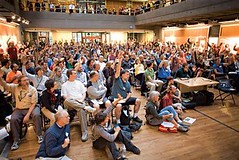
Labels: media, urban design/placemaking, urban revitalization, urban vs. suburban
See "The word gets around locally: Spelling bees are adult fun," from the Seattle Times. The article mentions once/month spelling bees at bars and the National Senior Spelling Bee, sponsored by the American Association of Retired Persons. From the article:
Labels: libraries
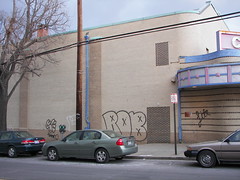
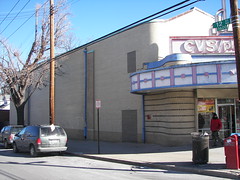
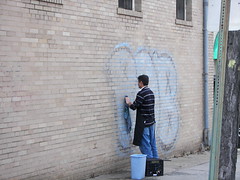
Labels: graffiti, public safety, quality of life advocacy
Just like the "Draft SUVs first" bumper sticker. I understand the sentiment. But like a yellow ribbon on a car, people aren't getting the connection between their lifestyle choices and the deaths of soldiers and others in countries like Iraq.
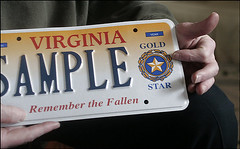
Labels: car culture, energy
In support of my general belief that the dominant governmental development paradigm is still one of big projects, clearance, and urban renewal like schemes, check out this article from yesterday's New York Times, "History vs. Homogeneity in New Orleans Housing Fight."
Labels: historic preservation, housing, urban design/placemaking, urban renewal, urban revitalization
I write from time to time about what I call "the language of revitalization." The real issue is disinvestment. What people call "blight" is a result of disinvestment. Rather than blame the place (I call this "blaming the building"), focus on disinvestment and explain the process.
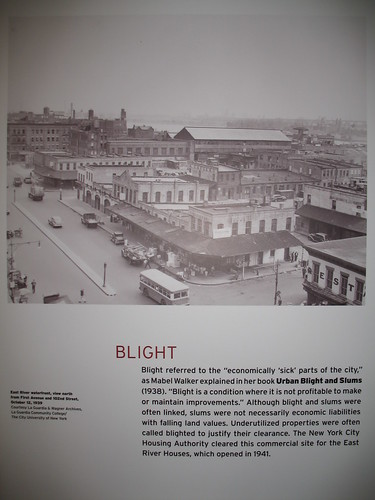
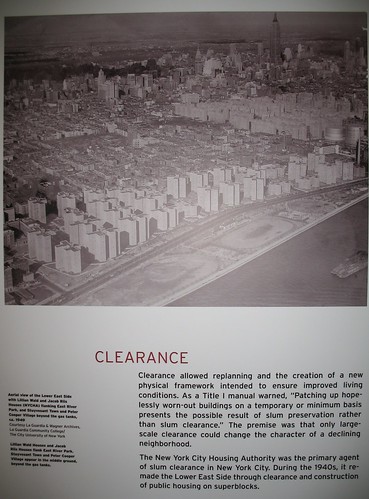
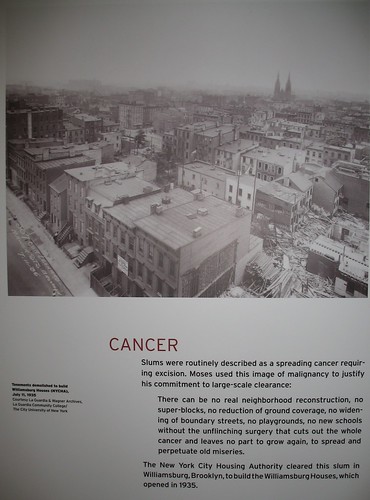
Labels: urban renewal, urban revitalization
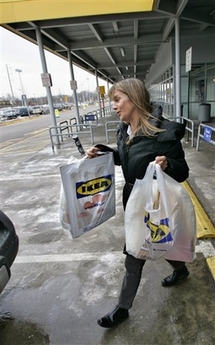 Marta Galante loads her car outside an Ikea store in Conshohocken, Pa., Photo: George Widman, AP.
Marta Galante loads her car outside an Ikea store in Conshohocken, Pa., Photo: George Widman, AP.Labels: energy, environment, retail
Civic engagement is as good as those engaged. In my opinion, we have a weak civic engagement culture in the city of Washington. Even if you disagree with me, you can't disagree with my belief that the extant training structures to support and strengthen deliberative civic engagement are practically nonexistent. And the various government agencies don't do much to build citizen involvement in their activities and planning processes--we're consulted, some, but we're not really involved.
Labels: civic engagement
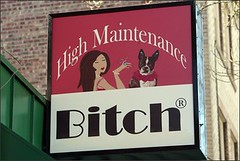
Labels: retail
Is an article co-authored by Jan Gehl, the Danish placemaking expert. I should have included this paper in yesterday's roundup on reading recommendations. I have mentioned this piece, which is available as an article in Urban Design International, but it turns out that the Centre for Public Space Research has published the paper separately.
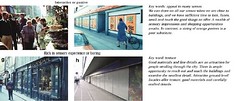
Labels: urban design/placemaking
Wi-fi is "bad" for restaurants and coffee shops because it encourages people to stay, taking up precious real estate, likely without buying more products. (Sparkys Espresso on 14th Street NW gives one hour free service with a purchase, and to get more time, you need to buy more stuff. OTOH, Cosi now offers free wi-fi to compete with Starbucks, which charges. I wonder if the Cosi signal at 3rd and Pennsylvania Ave. SE is strong enough to be picked up across the street in Starbucks?)
Labels: retail, urban design/placemaking
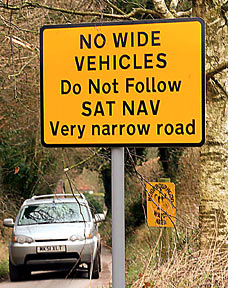
Labels: car culture, transportation planning
(It's harder for me to blog because I don't have 30 hours in a day, but I've been meaning to write about this.)
Labels: building a local economy, economic development, urban revitalization
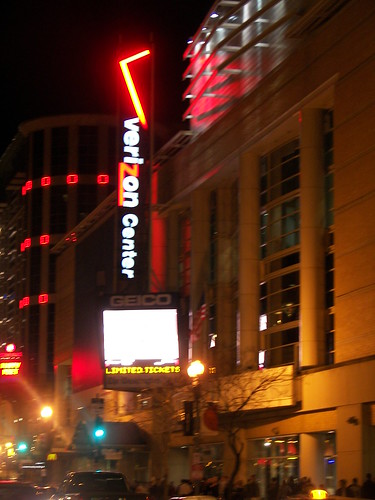
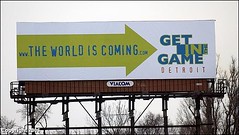

Labels: building a local economy, economic development, stadiums/arenas
On another list, someone writes:
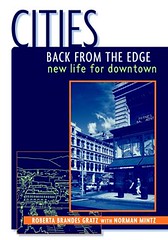
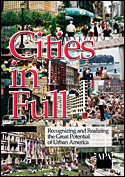

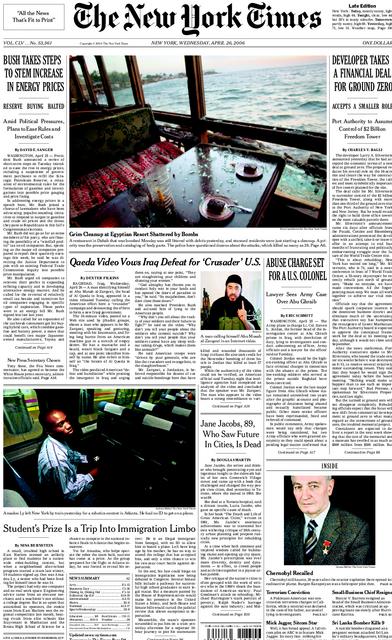
Labels: cultural heritage/tourism, urban design/placemaking, urban revitalization
1. It went Democratic in last fall's election.
Labels: retail
Neither Eastern Market nor the Florida Market have quality public restrooms. You need to be able to refresh yourself as part of "consuming" a complete destination.
Dennis Jaffe points out that I neglected to comment on his idea for a regional summit on pedestrian-vehicle issues. I commented thusly:

Labels: transit, transportation planning